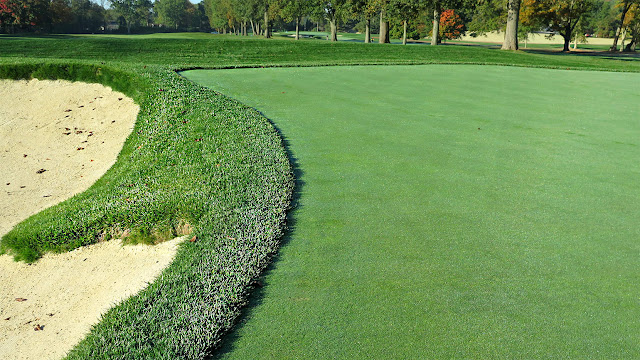Making a Case for Collarless
Albert Einstein could have been talking about managing putting green collars when he said, “Insanity is doing the same thing over and over again and expecting a different result.” Collars, especially bentgrass collars, are becoming the bane of superintendents in the Northeast. This is largely because bentgrass does not perform well at collar height when subjected to the amount of traffic and overregulation that collars often receive.
Making the case for collarless putting greens can be separated into two buckets. The first bucket is agronomics and turf health. Collars require a disproportionate amount of inputs for the results. As the USGA article “Collar Problems and How to Prevent Them” details, there are three primary factors that influence collar health and at least five mitigation techniques that can be used to improve collar performance. While this article does an excellent job detailing each of the mitigation strategies, in my opinion even if a superintendent does all these well, there is still potential for turf decline.
The second bucket is architectural and regional trends. The agronomic challenges are helping make the case for architectural changes. Many courses have found that removing collars reestablishes an older, classic look to the green complexes. Replacing the collars at least partially with putting surface will enlarge the greens and potentially create new hole locations closer to the edges. Features around the green like collection areas, mounding and bunkers may also be brought more into play.
There are economic benefits too. The mitigation techniques employed while trying to maintain healthy collars require labor and money. Transitioning collars to either putting surface or rough simplifies maintenance by eliminating extra tasks. The person mowing the green or the rough can now mow the former collar area, so an additional staff member or two no longer need to be assigned specifically to mow the collars.
There are several reasons to remove collars. You could be struggling to maintain good plant health in the collars and wondering why you spend so much money on an area that is never as good as expected. Or your course could be looking for ways to simplify maintenance and return the course to its classic-era roots. Removing collars is a low-risk effort that can return a lot of benefit to the bottom line and eliminate one of the most frustrating areas of the course to manage.

